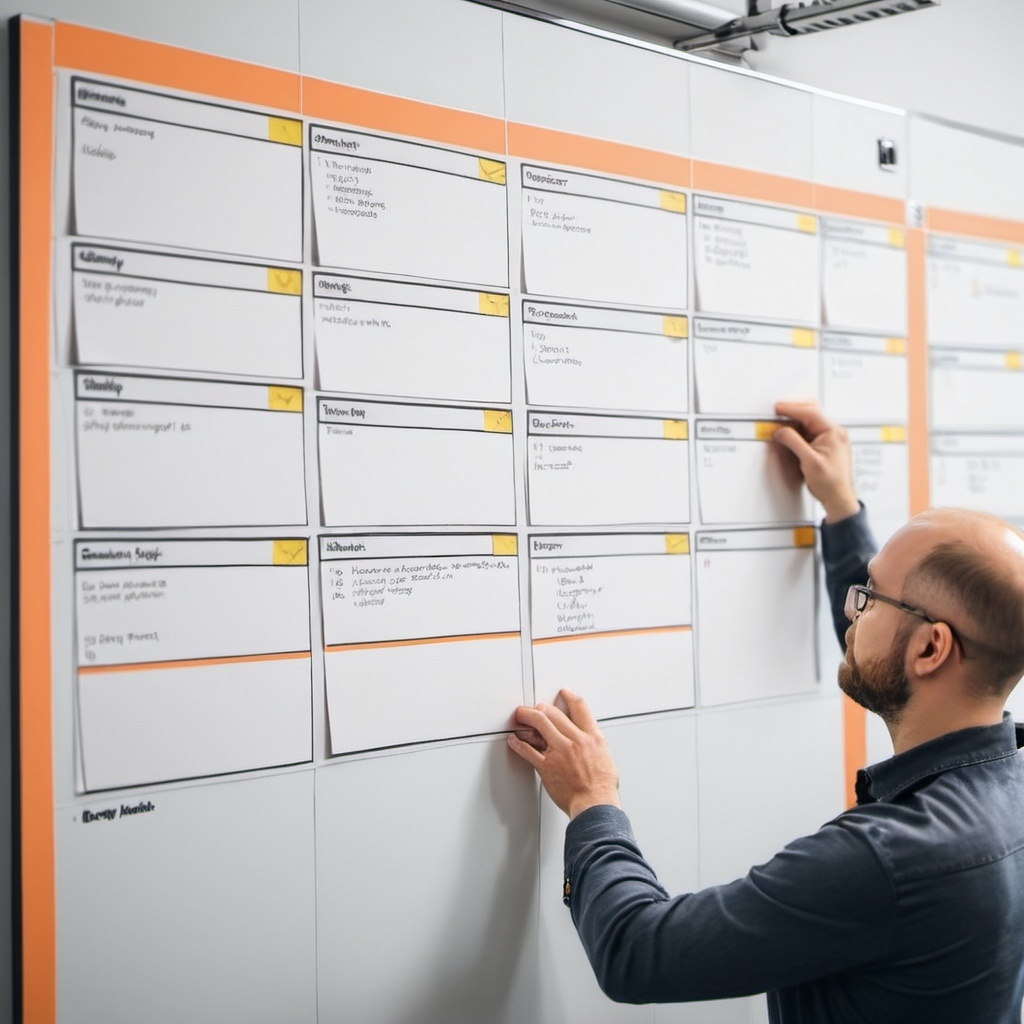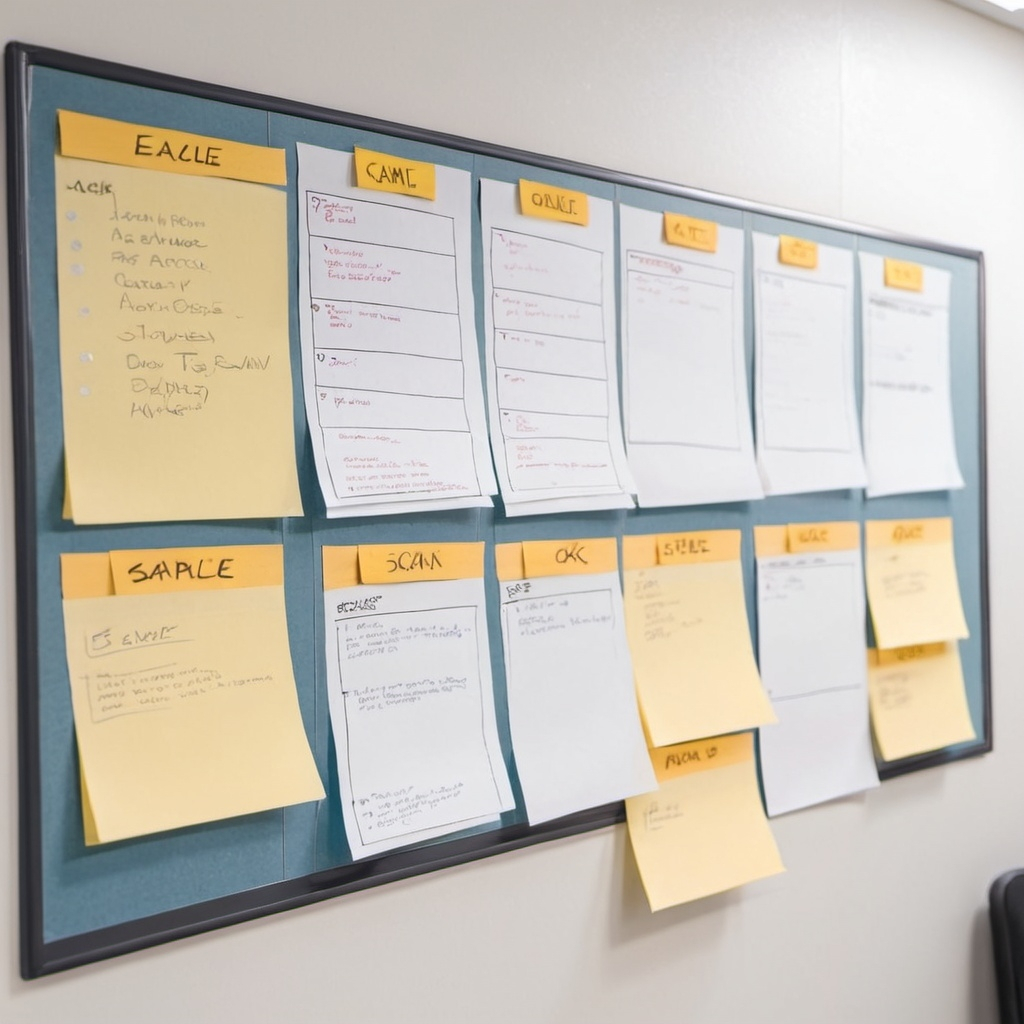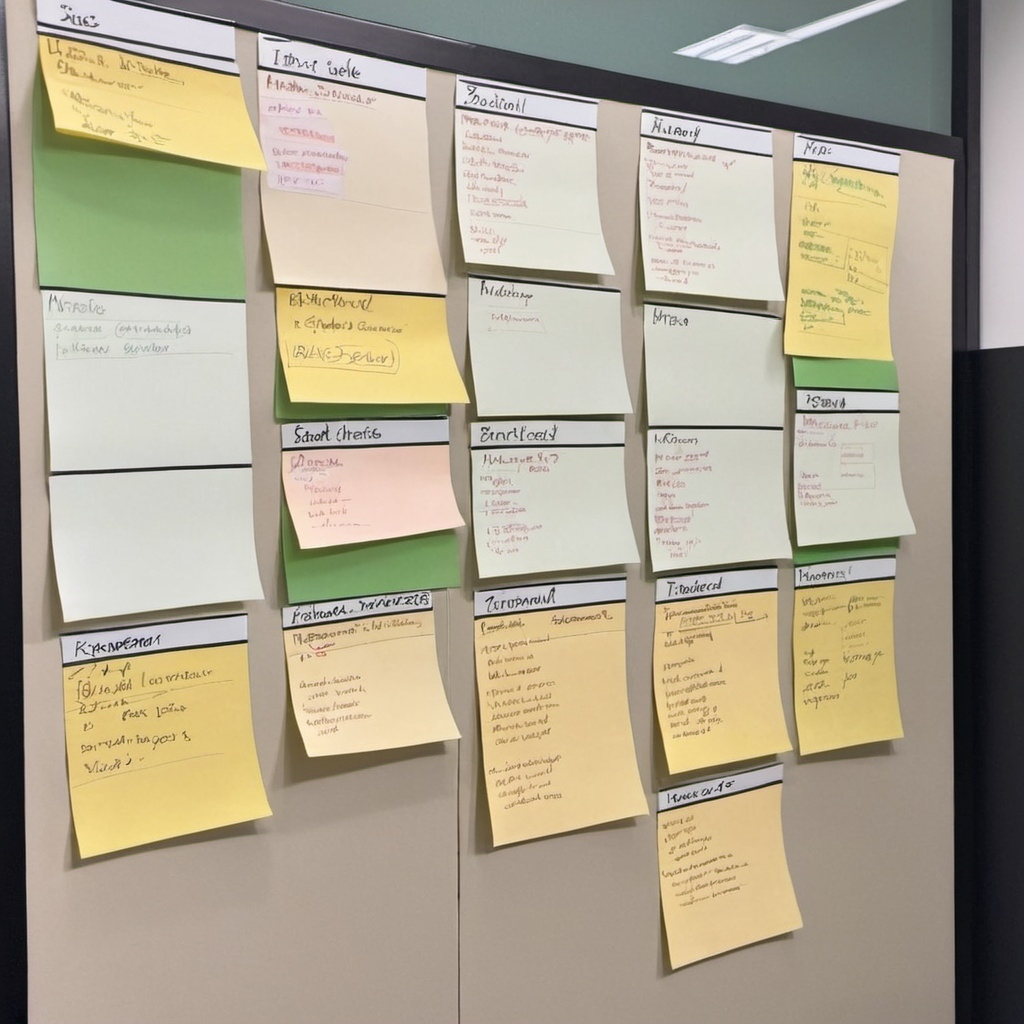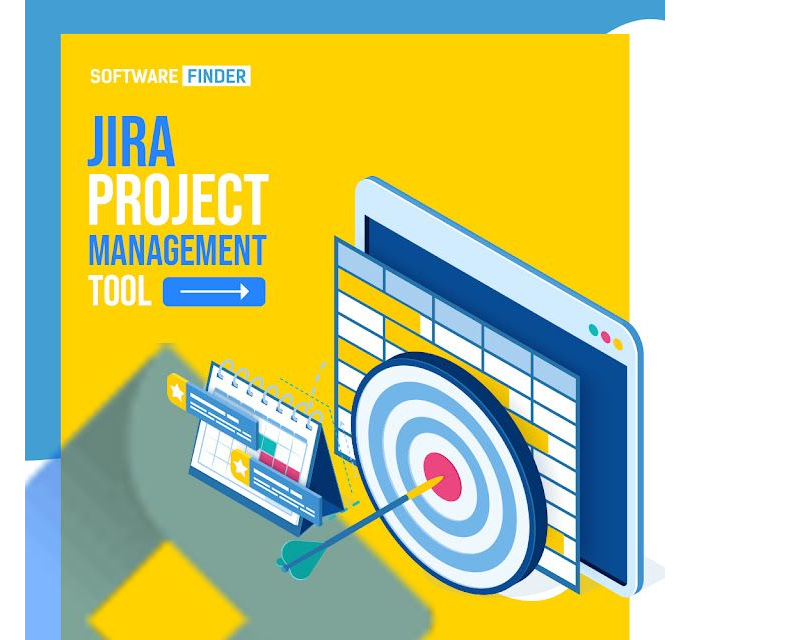What is a Kanban Board?
Kanban boards are visual project management tools used to optimize workflows and improve productivity in various industries. Derived from the Japanese word “Kanban,” meaning “signboard” or “billboard,” this system was first developed by Toyota in the 1940s as part of their manufacturing process. Today, Kanban boards are widely used across different sectors, including software development, healthcare, education, and more, to streamline tasks and promote efficiency.
The basic structure of a Kanban board consists of columns representing different stages of a workflow. Tasks are represented by cards that move through these columns as they progress. The simplicity of this visual representation allows teams to quickly grasp the status of a project, identify bottlenecks, and make data-driven decisions to enhance productivity.
Key Areas of Focus in Kanban Boards
Kanban boards are centered around a few key principles that make them effective in managing workflows. These principles ensure that the focus remains on delivering value to the customer, minimizing waste, and continuously improving the process.
1. Visualizing Work
The most fundamental aspect of a Kanban board is its ability to visualize work. By displaying tasks as cards on a board, teams can see the flow of work at a glance. This transparency helps in understanding what is being worked on, who is responsible, and what stage the task is in.
2. Limiting Work in Progress (WIP)
Kanban emphasizes limiting the number of tasks that can be worked on at any given time. This is known as WIP limits. By setting these limits, teams can focus on completing tasks rather than starting new ones, thus reducing multitasking and improving efficiency.
3. Managing Flow
Flow management involves ensuring that work moves smoothly through the different stages of the process. Kanban boards allow teams to identify and address bottlenecks, ensuring that tasks do not get stuck in any one stage for too long. This focus on flow ensures that work is completed in a timely manner.
4. Making Process Policies Explicit
Kanban encourages teams to define and make their process policies explicit. This includes setting criteria for when a task can move from one stage to another, defining the roles and responsibilities of team members, and establishing rules for managing WIP limits. Clear policies help in maintaining consistency and ensuring that everyone is on the same page.
5. Implementing Feedback Loops
Continuous improvement is a core principle of Kanban. Feedback loops, such as daily stand-ups or retrospectives, allow teams to reflect on their process, identify areas for improvement, and make necessary adjustments. This focus on learning and adaptation helps teams to evolve and become more efficient over time.
6. Improving Collaboratively, Evolving Experimentally
Kanban promotes a culture of collaboration and experimentation. Teams are encouraged to work together to identify problems and experiment with solutions. By continuously evolving their process, teams can improve their performance and deliver better results.
The Impact of Kanban Boards
Kanban boards have had a significant impact on various industries, revolutionizing the way work is managed and completed. The following are some of the key impacts of using Kanban boards:
1. Enhanced Productivity
Kanban boards help in optimizing workflows by reducing multitasking and minimizing waste. By focusing on completing tasks rather than starting new ones, teams can work more efficiently and deliver better results.

2. Improved Collaboration
Kanban boards promote transparency and communication within teams. By visualizing work and making process policies explicit, team members can collaborate more effectively, share information, and work towards common goals.
3. Greater Flexibility
Unlike some other project management methodologies, Kanban is highly adaptable and can be customized to fit the needs of any team or organization. Whether used in software development, marketing, or healthcare, Kanban boards can be tailored to suit the specific requirements of the workflow.
4. Better Decision-Making
The visual nature of Kanban boards allows teams to quickly identify bottlenecks, assess progress, and make informed decisions. By continuously monitoring and improving their process, teams can ensure that they are always working in the most efficient way possible.
5. Increased Customer Satisfaction
By focusing on delivering value and continuously improving their process, teams using Kanban boards can provide better products and services to their customers. This leads to increased customer satisfaction and loyalty.

Why Kanban Boards are Important
Kanban boards are important because they provide a simple yet powerful tool for managing workflows and improving productivity. Their importance can be attributed to several key factors:
1. Simplicity
Kanban boards are easy to understand and implement. Unlike some other project management methodologies that require extensive training and setup, Kanban boards can be quickly adopted by any team or organization. This simplicity makes them accessible to a wide range of users.
2. Versatility
Kanban boards can be used in various industries and for different types of work. Whether managing a software development project, organizing a marketing campaign, or streamlining a manufacturing process, Kanban boards can be adapted to fit the needs of any team.
3. Focus on Continuous Improvement
Kanban boards promote a culture of continuous improvement. By regularly reviewing their process and making data-driven decisions, teams can identify areas for improvement and make necessary adjustments. This focus on learning and adaptation ensures that teams are always evolving and becoming more efficient.
4. Empowerment of Teams
Kanban boards empower teams by giving them the tools to manage their own work and make decisions. By visualizing work, setting WIP limits, and defining process policies, teams can take ownership of their workflow and work towards common goals.
5. Alignment with Lean Principles
Kanban boards align with lean principles, which focus on minimizing waste, delivering value to the customer, and continuously improving the process. This alignment makes Kanban an effective tool for organizations looking to implement lean practices.

Comparing Kanban with Scrum and Similar Methodologies
Kanban is often compared with Scrum and other Agile methodologies. While they share some similarities, there are key differences that make each methodology unique. The following table provides a comparative analysis of Kanban, Scrum, and similar methodologies:
| Aspect | Kanban | Scrum | Waterfall | Scrumban |
|---|---|---|---|---|
| Core Principle | Continuous flow and visual management | Time-boxed sprints and iterative development | Sequential, linear process | Hybrid of Scrum and Kanban |
| Work Breakdown | Continuous tasks flow without a specific time frame | Tasks are broken down into sprints (typically 2-4 weeks) | Tasks are completed in a sequential order | Continuous tasks flow with some time-boxed sprints |
| Flexibility | High flexibility, can adapt to ongoing changes | Flexibility within the sprint, but changes are limited during the sprint | Rigid and less adaptable | High flexibility, with elements of both time-boxing and continuous flow |
| Team Roles | No defined roles; teams are self-organized | Defined roles (Product Owner, Scrum Master, Development Team) | Traditional roles with clear hierarchies | Mix of defined roles and self-organization |
| Focus | Process improvement and flow optimization | Product delivery and meeting sprint goals | Delivering a fixed product according to plan | Combination of product delivery focus with process improvement |
| WIP (Work in Progress) Limits | Yes, WIP limits are set to control the number of tasks in progress | No specific WIP limits, but the sprint backlog determines workload | No WIP limits, tasks are completed in sequence | WIP limits are used in combination with sprints |
| Meetings/Ceremonies | Regular meetings for feedback and improvement (e.g., stand-ups, retrospectives) | Fixed ceremonies (Sprint Planning, Daily Stand-ups, Sprint Review, Retrospective) | Meetings are scheduled as needed | Hybrid approach, adopting Scrum ceremonies with Kanban’s continuous improvement meetings |
| Metrics and Tracking | Focus on lead time, cycle time, and flow efficiency | Focus on velocity, burn-down charts, and sprint progress | Focus on project milestones and deadlines | Metrics from both Scrum and Kanban are used |
| Application | Suitable for any industry; best for teams needing flexibility and continuous delivery | Primarily used in software development; best for teams working in short, fixed iterations | Best suited for projects with well-defined requirements and a clear end goal | Ideal for teams transitioning from Scrum to Kanban or requiring a balance between both methods |
| Customer Involvement | Continuous feedback and collaboration with customers | Customer involvement primarily during sprint reviews | Customer involvement mostly at the beginning and end of the project | Continuous feedback similar to Kanban with periodic review points from Scrum |
| Pros | – High adaptability, – Continuous improvement, – Clear visualization of work and bottlenecks | – Well-defined structure, – Clear roles and responsibilities, – Regular feedback loops | – Clear timelines, – Well-defined stages, – Easy to manage larger teams | – Flexibility of Kanban with the structure of Scrum, – Adaptable to evolving needs |
| Cons | – Lack of structure can lead to ambiguity, – May require continuous monitoring | – Less flexibility within sprints, – Can be rigid for teams that need more adaptability | – Inflexibility, – Can lead to delays, – Less focus on continuous improvement | – Complexity of combining two methodologies, – May lead to confusion without proper guidance |
Conclusion
Kanban boards stand out as a remarkably effective tool for managing workflows and boosting productivity across various sectors. Their strength lies in their simplicity and adaptability, making them suitable for a broad range of applications from software development to manufacturing. By visualizing tasks and workflows, Kanban boards provide teams with a clear view of progress, identify bottlenecks, and streamline processes. This visual management approach not only enhances efficiency but also fosters better communication and collaboration within teams.

One of the key advantages of Kanban boards is their flexibility. Unlike some methodologies that require rigid adherence to specific practices, Kanban allows teams to adjust their processes in response to changing needs and priorities. This adaptability is crucial in today’s fast-paced environments where requirements often evolve. The emphasis on limiting work in progress (WIP) helps teams focus on completing tasks before taking on new ones, thereby reducing multitasking and improving overall productivity.
Kanban also supports continuous improvement through its iterative feedback loops. Regular reviews and reflections enable teams to identify areas for enhancement and make incremental adjustments, fostering a culture of ongoing development and learning. This commitment to continuous improvement ensures that processes remain efficient and responsive to changing demands.
While Kanban shares some similarities with methodologies like Scrum, such as its focus on transparency and iterative development, it differs in its approach to workflow management. Kanban’s lack of time-boxed sprints and predefined roles provides a more fluid and adaptable framework, making it suitable for teams that require greater flexibility.
In summary, Kanban boards are a valuable asset for any team looking to optimize their workflow, enhance productivity, and foster a culture of continuous improvement. Their visual and flexible nature makes them an excellent choice for managing complex projects and adapting to evolving needs, ultimately leading to better results and increased satisfaction for both team members and customers.
Curated Reads For You:





Your point of view caught my eye and was very interesting. Thanks. I have a question for you.
La weekly I just like the helpful information you provide in your articles